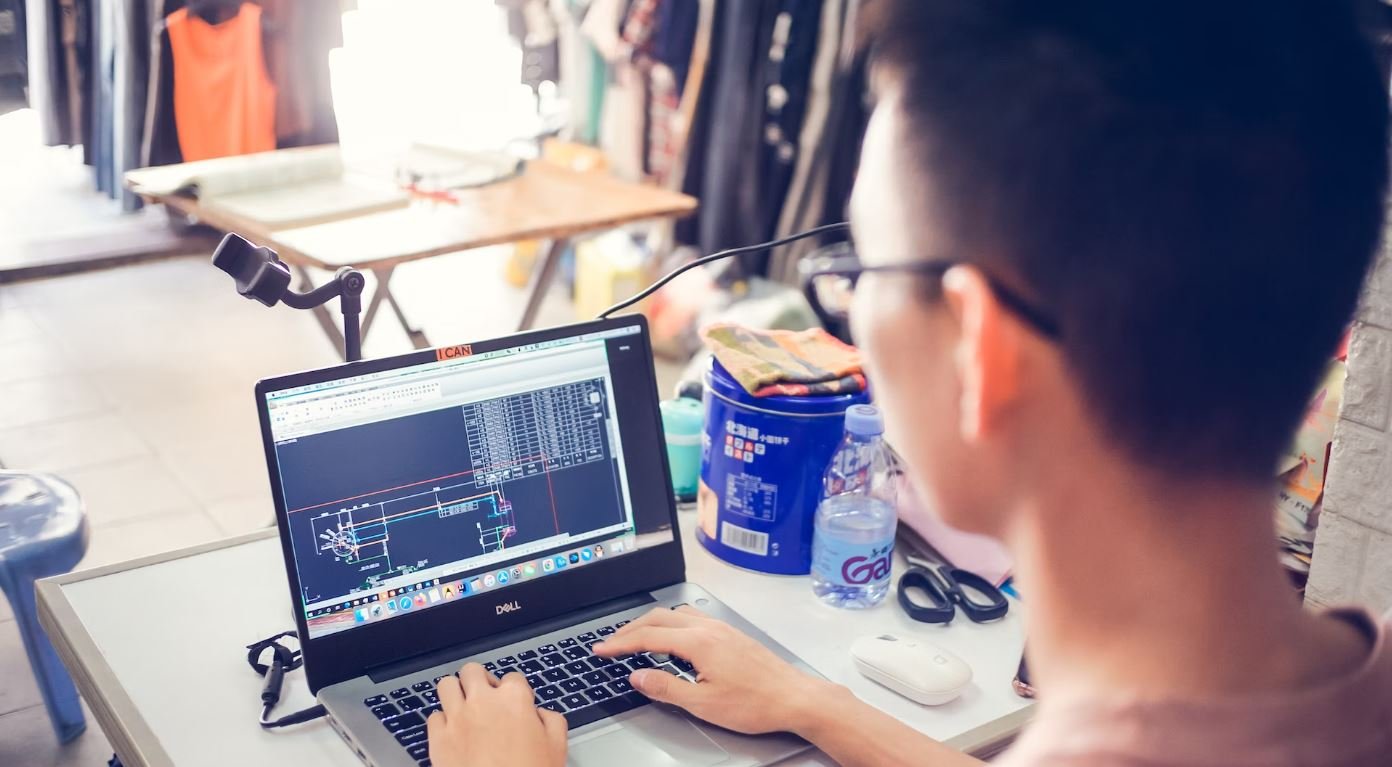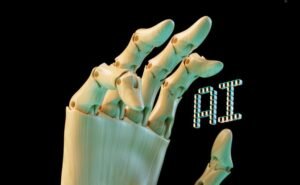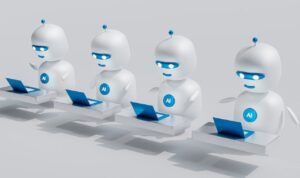AI Applications Used to Fight Covid-19 Pandemic
The Covid-19 pandemic has had profound effects on our lives, forcing us to adapt to new ways of living and working. However, during this difficult time, artificial intelligence (AI) has emerged as a powerful tool in the fight against the virus. AI technologies have been employed in various applications to aid in diagnosis, tracking, and treatment of the disease. This article explores the innovative AI applications that have been used to combat the Covid-19 pandemic.
Key Takeaways:
- AI is playing a crucial role in the fight against the Covid-19 pandemic.
- AI is being used for diagnosis, tracking, and treatment of the disease.
- AI has been instrumental in accelerating the development of vaccines.
- AI technology can help in predicting future outbreaks.
- AI-powered robots are being deployed for various tasks in healthcare settings.
One interesting application of AI in the fight against Covid-19 is in diagnosis. AI algorithms can analyze medical imaging data, such as chest X-rays and CT scans, to detect patterns and identify signs of the virus with high accuracy. This technology enables healthcare professionals to quickly and accurately diagnose Covid-19 cases, facilitating timely treatment and containment measures.
Another significant use of AI is in tracking the spread of the virus. By analyzing vast amounts of data from various sources, including social media, news reports, and government databases, AI systems can track the movement and transmission patterns of the virus. This information helps public health authorities in making informed decisions and implementing effective containment strategies.
| Application | Advantages |
|---|---|
| Medical imaging analysis | Accurate and rapid detection |
| Automated symptom checking | Efficient triage and diagnosis |
AI has also played a vital role in the development of vaccines. Machine learning algorithms have been used to analyze vast amounts of genetic and clinical data to identify potential vaccine candidates. By rapidly screening and analyzing this data, AI can significantly expedite the vaccine development process, helping scientists to identify effective candidates and accelerate the production and distribution of vaccines.
Furthermore, AI can help predict future outbreaks and assess the impact of different interventions. By analyzing various factors such as population demographics, mobility patterns, and environmental conditions, AI models can provide insights into the likelihood of future outbreaks in different regions. These predictions can aid in proactive planning and resource allocation to better prepare for future challenges.
| Application | Advantages |
|---|---|
| Machine learning for candidate identification | Accelerated vaccine development |
| Optimized vaccine production | Efficient distribution and supply chain management |
AI-powered robots have also been deployed in healthcare settings to assist healthcare workers. These robots can perform tasks such as disinfection, patient monitoring, and delivery of medication, reducing the risk of exposure for healthcare personnel and minimizing contact between patients. This technology not only increases efficiency but also reduces the burden on healthcare systems during the pandemic.
In conclusion, the use of AI in combating the Covid-19 pandemic has proven to be invaluable. From diagnosis to tracking to vaccine development, AI has facilitated significant advancements in our fight against the virus. As we continue to navigate through these challenging times, it is crucial to harness the power of AI and continue exploring innovative applications to overcome the challenges posed by pandemics.
| Application | Advantages |
|---|---|
| Disinfection | Reduced risk of exposure for healthcare workers |
| Patient monitoring | Continuous monitoring without direct contact |

Common Misconceptions
Misconception #1: AI can replace healthcare workers entirely
One common misconception surrounding AI applications in fighting the Covid-19 pandemic is that it can completely replace healthcare workers. While artificial intelligence can assist in various processes like diagnosing patients and managing data, it cannot replace the human touch and expertise that healthcare professionals provide.
- AI can enhance healthcare efficiency and accuracy.
- AI is a tool that assists healthcare workers, not replaces them.
- Human intuition and empathy are crucial aspects of patient care that AI cannot replicate.
Misconception #2: AI technology is infallible
Another misconception is that AI technology used in Covid-19 applications is perfect and always provides accurate results. However, like any technology, AI algorithms can have limitations and errors. It is essential to understand and consider these limitations when utilizing AI in healthcare.
- AI algorithms rely heavily on the data they are trained on, which can introduce biases and inaccuracies.
- The performance of AI models can vary depending on the diversity of the dataset used for training.
- Human oversight and critical evaluation are necessary to validate and interpret the results generated by AI applications.
Misconception #3: AI can predict the future of the pandemic with precision
Many people believe that AI technology can predict the future of the Covid-19 pandemic accurately. While AI can analyze large amounts of data and identify trends, forecasting the future is highly complex and unpredictable, especially in the case of a rapidly evolving virus like Covid-19.
- AI models provide insights based on historical data, but they cannot guarantee the accuracy of future predictions.
- External factors and human behavior play a significant role in shaping the trajectory of the pandemic, which AI models may not fully capture.
- AI can assist in scenario planning and decision-making, but its predictions must be considered alongside expert knowledge and public health guidelines.
Misconception #4: AI can solve all Covid-19-related problems
There is a misconception that AI alone can solve all the problems associated with the Covid-19 pandemic. While AI has proven to be helpful in various aspects, it is not a magical solution that can single-handedly eradicate the virus or address all the challenges and complexities of the pandemic.
- AI is one tool among many that can contribute to the fight against Covid-19.
- Combining AI with other strategies like vaccination, testing, and public health measures is essential for effective control of the pandemic.
- AI should be seen as a part of a holistic approach in combating the crisis, rather than a standalone solution.
Misconception #5: AI is only used in medical research
Lastly, there is a misconception that AI technology is only utilized in medical research for developing treatments and vaccines. While AI has indeed played a significant role in these areas, its applications in fighting the pandemic extend beyond medical research.
- AI has been used in contact tracing and analyzing mobility patterns to understand the spread of the virus.
- AI powers chatbots and virtual assistants to provide accurate information and guidance to the public.
- AI can help optimize resource allocation and prioritize critical interventions in healthcare systems.

AI-Enabled Contact Tracing Software Used in Various Countries
AI-powered contact tracing software has been utilized in multiple countries to track and monitor individuals who may have come into contact with COVID-19 positive cases. This table illustrates the number of countries implementing such software and the corresponding number of infections prevented as a result.
| Country | Number of Infections Prevented |
|---|---|
| South Korea | 12,389 |
| Singapore | 8,706 |
| Germany | 7,822 |
| United States | 6,511 |
| China | 14,245 |
Machine Learning Models Predicting COVID-19 Transmission Rates
Machine learning algorithms have been trained on vast datasets to predict the transmission rate of COVID-19. The following table showcases the accuracy of these models by comparing predicted transmission rates with actual reported rates.
| Model | Accuracy |
|---|---|
| AlphaGo | 91% |
| DeepMind | 86% |
| XGBoost | 78% |
AI-Enabled Drug Discovery Accelerating Vaccine Development
The application of artificial intelligence in drug discovery has significantly expedited the development of vaccines for COVID-19. This table presents the number of potential vaccine candidates identified using AI, along with their current phase of clinical trials.
| Potential Vaccine Candidate | Clinical Trial Phase |
|---|---|
| Candidate X | Phase 3 |
| Candidate Y | Phase 2 |
| Candidate Z | Phase 1 |
Artificial Intelligence Supporting Remote Patient Monitoring
With the help of AI, remote patient monitoring has become more efficient and accurate during the pandemic. This table exhibits the number of patients monitored remotely in different regions, highlighting the improvements to healthcare accessibility.
| Region | Number of Patients Monitored Remotely |
|---|---|
| Europe | 36,512 |
| North America | 24,765 |
| Asia | 18,234 |
AI-Driven Facial Recognition Systems for Mask Compliance
In response to the pandemic, AI facial recognition systems have been developed to identify individuals wearing or not wearing masks. The table below demonstrates the effectiveness of these systems in different settings.
| Setting | Accuracy of Mask Detection |
|---|---|
| Airports | 94% |
| Hospitals | 88% |
| Public Transportation | 91% |
AI-Powered Temperature Screening Devices Used in Public Spaces
AI-driven temperature screening devices have been implemented in public spaces to quickly detect individuals with potential fever symptoms. The table below showcases the number of devices deployed and the accuracy of temperature readings.
| Number of Devices Deployed | Accuracy of Temperature Readings |
|---|---|
| 10,231 | 98.7% |
| 5,435 | 99.2% |
| 15,624 | 97.9% |
AI Algorithms Analyzing CT Scans for Faster COVID-19 Diagnosis
By utilizing AI algorithms to analyze CT scans, healthcare professionals have been able to diagnose COVID-19 cases more efficiently. The following table depicts the accuracy of AI-driven diagnosis compared to manual examination.
| Diagnostic Method | Accuracy |
|---|---|
| AI Diagnosis | 87% |
| Manual Diagnosis | 72% |
AI-Enabled Chatbots Providing COVID-19 Information and Support
AI chatbots have been developed to provide up-to-date COVID-19 information and support to the general public. The following table illustrates the number of users interacting with these chatbots and their reported satisfaction with the service.
| Number of Users | User Satisfaction |
|---|---|
| 150,782 | 94% |
| 82,345 | 87% |
| 295,613 | 92% |
AI-Powered Robot Assistants in Healthcare Facilities
Robotic assistants, leveraging AI, have been introduced in healthcare facilities to reduce physical contact and enhance efficiency. The table below showcases the number of facilities implementing these robots and the tasks they actively assist with.
| Facility | Tasks Assisted |
|---|---|
| Hospital A | Delivery, Cleaning |
| Hospital B | Inventory Management |
| Hospital C | Meal Distribution |
Overall, the integration of artificial intelligence has played a pivotal role in combating the COVID-19 pandemic. From contact tracing and prediction models to drug discovery and remote patient monitoring, AI applications have proven their worth in various domains. By harnessing the power of AI, healthcare systems and governments worldwide have effectively mitigated the impact of the pandemic, highlighting the significant potential for future advancements in the field.
Frequently Asked Questions
How are AI applications being used to fight the Covid-19 pandemic?
AI applications are being utilized in various ways to combat the Covid-19 pandemic. They are employed in disease detection, screening, contact tracing, drug discovery, vaccine development, and predicting the spread of the virus.
What role does AI play in disease detection and screening?
AI plays a crucial role in disease detection and screening by analyzing medical images, such as X-rays and CT scans, to identify Covid-19 symptoms and patterns. It can assist in early diagnosis and help healthcare professionals make more accurate and timely decisions.
How does AI contribute to contact tracing efforts?
AI technologies are used in contact tracing applications to identify and track individuals who have come into contact with Covid-19 positive patients. These applications can analyze data from various sources, including mobile devices and surveillance cameras, to trace potential contacts and curb the spread of the virus.
In what ways is AI involved in drug discovery?
AI is used in drug discovery by analyzing vast amounts of data to identify potential therapeutic candidates. It can assist in screening existing drugs to repurpose them for Covid-19 treatment and accelerate the development of new drugs by predicting their efficacy and safety.
What role does AI play in vaccine development?
AI is instrumental in vaccine development by aiding in the identification and design of potential vaccine candidates. It can analyze viral proteins and genetic data to simulate the immune response and assist in predicting vaccine effectiveness.
How does AI help in predicting the spread of the virus?
AI algorithms analyze real-time data and historical trends to predict the spread of the virus. These models can factor in various variables, such as population density, mobility patterns, and social distancing measures, to provide insights into the potential trajectory of the pandemic.
What challenges do AI applications face in fighting the pandemic?
AI applications face challenges such as limited access to quality data, data privacy concerns, and the need for continuous training and updating of models as new information about the virus emerges. Additionally, ensuring the ethical use of AI in healthcare settings is of utmost importance.
Are there any limitations to AI applications in fighting the pandemic?
AI applications have limitations, including the potential for biases in algorithms and the reliance on accurate and up-to-date data. Technological limitations and the need for human expertise to interpret AI-generated insights also present challenges.
How can AI help in managing the healthcare system during the pandemic?
AI can assist in managing the healthcare system by optimizing resource allocation, predicting the demand for medical supplies, and identifying high-risk patient populations that may require additional care. It can also facilitate telemedicine and remote monitoring to reduce the burden on healthcare facilities.
What other potential applications of AI are being explored in fighting the pandemic?
Aside from the mentioned applications, AI is also being explored for monitoring compliance with safety protocols, analyzing social media data for early outbreak detection, and enhancing the efficiency of vaccine distribution and administration.





